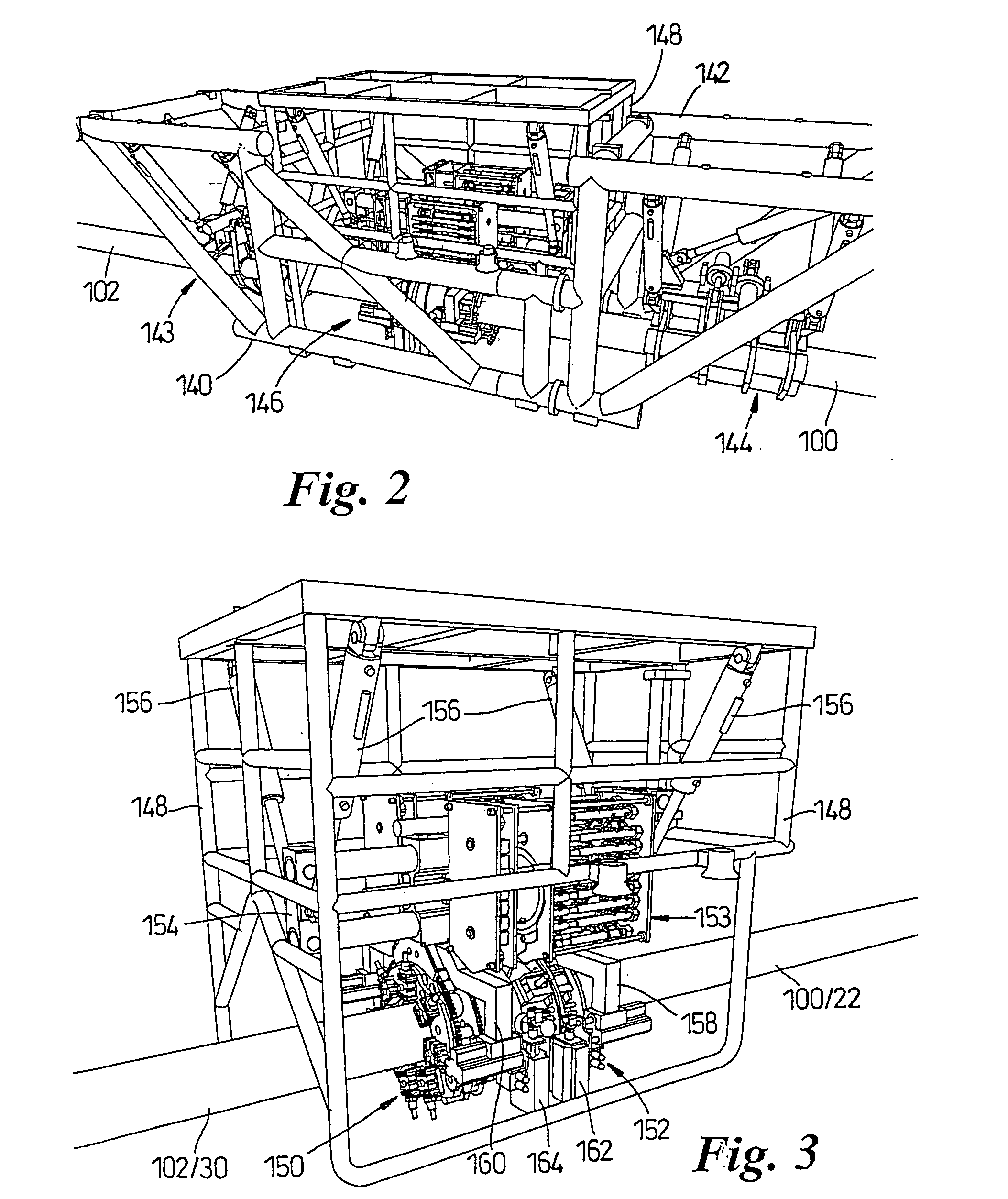Remote bolted flange connection apparatus and methods of operation thereof
a bolted flange and bolted technology, applied in mechanical equipment, sewer pipelines, pipe laying and repair, etc., can solve the problems of limited application of this method, lack of widespread acceptance of bolted flanges, and inability to use this important connection method in deepwater applications. , to achieve the effect of reducing the complexity of deployment and recovering the cost of tooling
- Summary
- Abstract
- Description
- Claims
- Application Information
AI Technical Summary
Benefits of technology
Problems solved by technology
Method used
Image
Examples
Embodiment Construction
[0092] The bolted flange connection system to be described has been designed to make up standard ANSI and API flange joints for various pipeline tie-in situations, such as spool piece connection and flowline-tree connections. This provides the opportunity of utilising proven technology from shallow water into deepwater applications, without the need for divers and with the benefits of reduced costs and lead times, and increased system reliability. The system has been developed from the MATIS™ System described in the paper by West et al, mentioned in the introduction.
[0093]FIG. 1 shows a diver-less flange connection apparatus 10 approaching a work site under control of a remotely operated vehicle (ROV) 12. The apparatus is carried entirely within frame 14, so as to have very little weight when submerged. ROV 12 and apparatus 10 receive power and control signals via an umbilical cable 18.
[0094] At the work site shown in FIG. 1A, a pipeline repair is to be completed. A broken pipelin...
PUM
 Login to View More
Login to View More Abstract
Description
Claims
Application Information
 Login to View More
Login to View More - R&D
- Intellectual Property
- Life Sciences
- Materials
- Tech Scout
- Unparalleled Data Quality
- Higher Quality Content
- 60% Fewer Hallucinations
Browse by: Latest US Patents, China's latest patents, Technical Efficacy Thesaurus, Application Domain, Technology Topic, Popular Technical Reports.
© 2025 PatSnap. All rights reserved.Legal|Privacy policy|Modern Slavery Act Transparency Statement|Sitemap|About US| Contact US: help@patsnap.com



